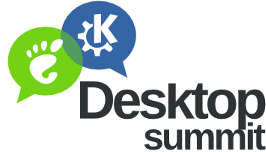Building Bridges: Making KDE accessible
Frederik Gladhorn got his KDE development started with the vocabulary application Parley. He worked on several parts of KDE, such as enabling easy sharing of user created content via the Get Hot New Stuff framework. He currently lives in Oslo and works with the goal of making Qt accessible to everyone.
Accessibility, the ability to access, is an important side of the devices we interact with on a daily basis. Enabling as many people as possible to use our applications is important. When it comes to user interfaces, several aspects have to be considered. As an example, imagine someone with visual disabilities wanting to operate a touch-device. There are several different disabilities to be taken into account when designing user interfaces, and in the end, everyone benefits from improvements made for more accessible interfaces.
With improvements in Qt's accessibility support on Linux, the focus of this talk will be on making KDE applications more accessible. The good news is, that you get most of the way to an accessible application for free. The KDE widgets need to be checked to work properly with the accessibility support in Qt. Another interesting topic is the support for Qt's graphics view framework and Qt Quick. I will present the ongoing research to make Qt Quick accessible.
I will give an overview of what we currently have in Qt when it comes to accessibility.
Many things work out of the box. We support big fonts and color schemes with high contrasts, right from KDE's settings.
On the other hand there are some missing pieces that I would like to mention as well. I will explain what is required to make new customized widgets accessible. Qt offers the QAccessible API to introspect the application's user interface. I will explain how a screen reader uses these APIs.




















